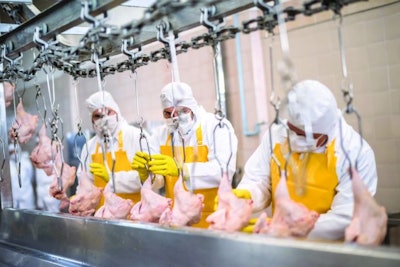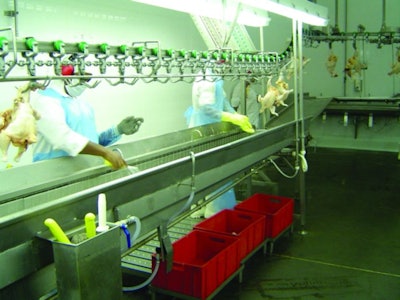
The way that the Japanese automobile industry is managed could offer a number of valuable lessons for poultry processors. The two industries are, in fact, similar, with perhaps the following differences being the most notable.
Assembling a car consists of attaching various parts to a chassis, while processing a chicken requires the removal of parts that are unsuitable for human consumption. If deboning and cutup are carried out, then the skeleton is comparable to a chassis.
Fostering the correct culture
Micromanagement forms a key part of the culture of the Japanese auto manufacturer Toyota, and there are various elements of micromanagement that, applied to preslaughter and processing, can increase efficiency.
In Japan, education includes encouraging the habit of deep and patient observation. Attention can become so focused that the time dedicated to it becomes unimportant when compared to the high number of microdetails that are observed. This study is complemented by a continuous reflection on how what has been learnt can be applied to the business.
The workplace is the ideal place to learn. It is the heart of the company, where all activities are conducted, and where there should be continuous questioning, analysis and evaluation.
In this scenario, what are often deemed to be errors become significant learning opportunities. Those that commit them should not be seen as guilty, rather, they should be asked to work together to discover the root cause of the problems and find effective solutions.
Key areas
New processes need to be developed with utmost care so that, when put into practice they require minimal time and effort.
Workstations must be as ergonomically correct as possible, helping to ensure that workers do not quickly tire and can achieve the output required by the company.
Statistical data may be highly important but is no substitute for seeing operations firsthand. All areas of the plant should be visited to understand potential difficulties and how these might affect results.
Application in processing
There are many areas where the above practices can be applied to poultry processing.
Take, for example, workstations. Good ergonomic design could result in fewer staff being needed and consequently lower costs. The benefits of a well-designed work area are easily illustrated by considering the placing of broilers into shackles. If workers are comfortable, they can hang 1,800 birds per hour.
Induction and training programs should have an emphasis on focusing worker attention on details and microdetails. Adopting a culture of concentration will help staff to become completely absorbed in their work.
Microdetails
Procedures may be in place for each of the tasks carried out in the plant, but these procedures should never function as a straitjacket. Workers should be encouraged to evaluate and analyze working practices. If an opportunity for proven improvement exists, it should be implemented. Following this approach will not only improve yields but also increase worker satisfaction.
An example of possible improvement could be, for example, the installation of a strategic support over which birds move on reaching the evisceration team, saving them from manually handling carcasses when removing the intestinal package.
Where knowledge may be incomplete for any of the processing operations, the risk of making mistakes increases. Workers should be continually encouraged to learn about the materials they handle. The issues that may arise from this incomplete knowledge become particularly apparent when one considers the impact of inadequate feed withdrawal.
Birds will flap their wings in the bleed tunnel if feed withdrawal has been too short. This occurs due to the feed putting pressure on the trachea and causing breathing difficulties. If this is not understood, workers may increase the stun voltage believing that it has been set too low. Using a higher voltage, however, will impact stun quality, scalding, plucking and the final yield.
Intelligent quality selection
Ideally, birds should arrive at the processing plant in the best possible physical condition. Any damage that birds may have suffered may only become apparent once they exit the last plucker. However, at this stage, in most cases, all carcasses continue to evisceration.
Sorting the birds at this point, with grade A birds continuing to evisceration and the remainder being set for reprocessing, could offer various advantages. It would give workers a more constant work rhythm, leading to greater speed and more uniformity.
Management reporting
Artificial intelligence can allow vast amounts of data to be processed in real time, however, there is always the risk that the volume of data can obscure what really matters.
Productive management necessitates keeping in mind what matters most and what needs to monitored on a daily basis.

Intelligent cameras, robots benefit poultry processing

















